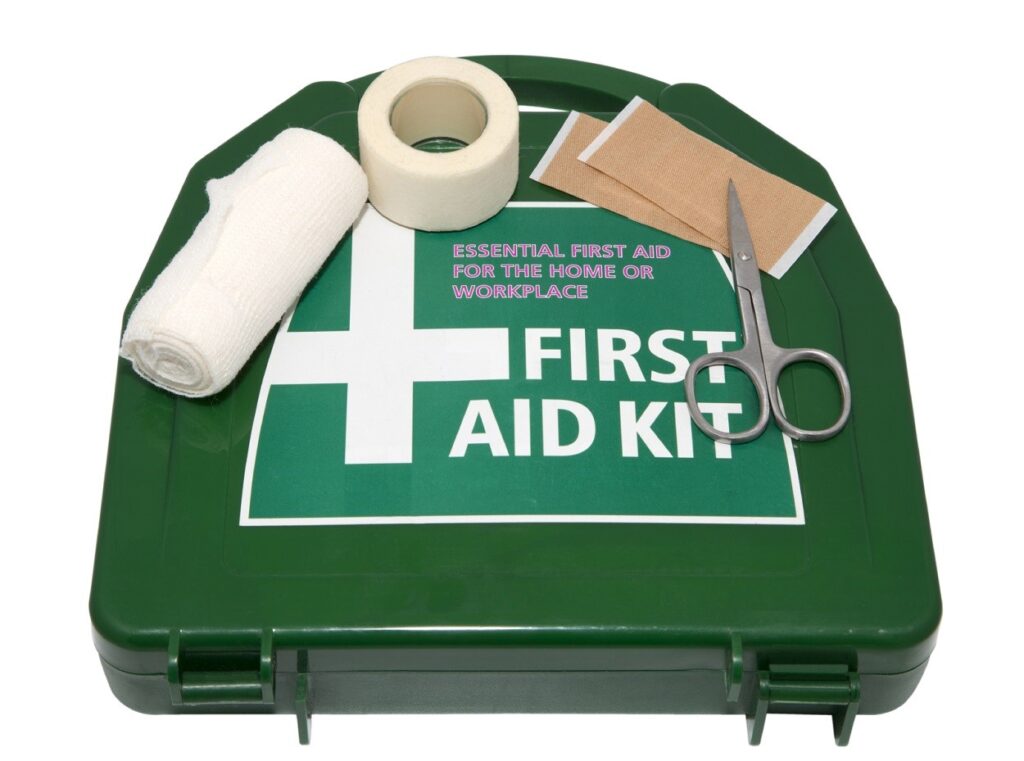The law states that all employers must provide adequate and appropriate first aid facilities to assist employees who are injured or become ill at work – and failure to do so could result in litigation or fines.
But what exactly does ‘adequate and appropriate’ mean, and how can you ensure this is implemented in your workplace?
Our guide will talk you through the basic requirements, and give suggestions for best practises that all HR professionals should be striving for. A little attention and organisation is all it takes to ensure your staff are properly cared for.
The legal requirements
The Health and Safety Executive (HSE) states that you must provide an appropriately stocked first aid kit for each site, in a container clearly marked with a white cross. This should be kept in an easily accessible place, ideally near hand washing facilities.
You must also appoint at least one person to be responsible for the first-aid arrangements – in many cases this will be a member of staff trained in first aid, but in certain circumstances someone to check and maintain the kit, and call the emergency services if necessary, may suffice.
Finally, all employees must be made aware of the first aid arrangements so that they are able to quickly seek help in an emergency.
Basic first aid kit
There is no definitive list of what your first aid kit must contain, but the HSE advises the following as the minimum requirements for a low-risk environment such as an office:
- a leaflet giving general advice on first aid
- 20 individually wrapped sterile plasters in assorted sizes. Hypoallergenic can be provided if necessary
- two sterile eye pads
- four individually wrapped triangular bandages, preferably sterile
- six safety pins
- two large, sterile, individually wrapped un-medicated wound dressings
- six medium sized, individually wrapped un-medicated wound dressings
- a pair of disposable gloves
Tablets and medicines are not required, and should not be kept in the first aid container. An easy way to ensure you have all the basics is to purchase a British Standard first aid kit that adheres to the new BS 8599 regulations.
If you have 10 employees or more you will need to keep a statutory accident book, and even for smaller workplaces this is a useful practice. Keeping your accident book near the first aid supplies will help staff remember to log any incidents that occur.
Tailoring your first aid provision
Clearly, what is adequate for an office will not be enough for a kitchen or building site, and even office environments will differ in the hazards they present.
For this reason, the HSE advises that every employer should carry out a needs assessment and tailor their first aid arrangements to this.
Your needs assessment does not have to be written down, but doing so may be helpful in justifying your provision to an inspector. The HSE website provides resources to help you assess your work environment.
Needs assessment
Firstly, you need to think about the nature of the work and workplace, and the hazards they present. Looking through your accident log will give you a quick overview of the most common accidents. If your employees work with chemicals, machinery or electricity, you may need to make to make special provisions.
Secondly, it is important to consider the size and working patterns of your organisation.
A workforce of over 25 will benefit from multiple first aid kits and a dedicated first aid room. And if you work on staggered shifts, you’ll need to have an appointed person or first aider available at all times.
Finally, distance should be taken into account. Travelling workers may require their own first aid kits, and for particularly remote sites you may need to make special arrangements with the emergency services or establish a plan for emergency transport.
Is a first aider necessary?
The law states that every employer must have someone in charge of the first aid arrangements, but they do not necessarily have to be a trained first aider – although in many cases this will be the best option. Your needs assessment will help you decide what level of expertise you need in your workplace.
In some circumstances it will always be necessary to have a trained first aider – if you have high levels of inexperienced workers, or members of staff with disabilities or health problems for instance.
Similarly, high risk environments should also have a trained person on hand at all times.
Numbers should also be taken into account – if you have over 25 employees, it is recommended you have a trained first aider and dedicated first aid room, even if the working environment is low-risk. Large establishments will need at least one first aider for every 50 employees.
Stay up to date
It’s all well and good having the best first aid kit money can buy, but if it is not properly maintained it will be of no use in an emergency.
Antiseptic creams and sterile items will all have expiry dates, and must be replaced when this passes. Similarly, sterile dressings cannot be kept or reused once opened, and will need replenishing.
The person appointed to manage the first aid arrangements should regularly check the first aid supplies, as well as after every incident. For this to be effective they must also be aware of the process for ordering replacement stock.
Peace of mind for everyone
Your first aid kit might go months without being used, so it can seem like a minor detail in a thriving business. But with over 611,000 workplace injuries and 27.3 million working days lost due to work-related illness or injury last year, it’s important to provide the best possible care.
In the case of minor injury, effective first aid provision will reassure your staff that their health and safety is important to their employer, and also help minimise disruption to their work. And in more serious instances it could reduce serious damage or even save a life.









